Top Morocco Airports: Your Guide to Traveling Through Morocco Airport
Discover essential information on Morocco's top airports, including facilities, tips, and travel adv...
Read this article
Suspendisse interdum consectetur libero id. Fermentum leo vel orci porta non. Euismod viverra nibh cras pulvinar suspen.

Morocco beckons with its intoxicating blend of ancient traditions and stunning landscapes, and Marrakech stands as the perfect gateway to this North African jewel. Whether you’re dreaming of camel rides across golden dunes, exploring charming coastal town escapes, or trekking through the towering mountains of the High Atlas, Marrakech morocco trips offer unparalleled access to the country’s most captivating destinations. Marrakech has been a welcome port of call for visitors for more than a thousand years, offering a rich history that continues to enchant travelers. Its vibrant, maze-like medina adds to the city’s allure, with its narrow streets and bustling atmosphere. Tourists enjoy wandering through these winding streets, discovering lively souks, and visiting historic sites that showcase the city’s unique character. However, Marrakech is a vibrant and bustling city that can be overwhelming to first-time visitors, so planning is essential.
This vibrant Moroccan city serves as your launching pad for incredible adventures, from intimate cooking classes in traditional riads to multi-day expeditions deep into the Sahara Desert. With its UNESCO World Heritage medina, world-class accommodations, and strategic location, Marrakech transforms any visit to morocco into an unforgettable journey through one of Africa’s most fascinating countries.
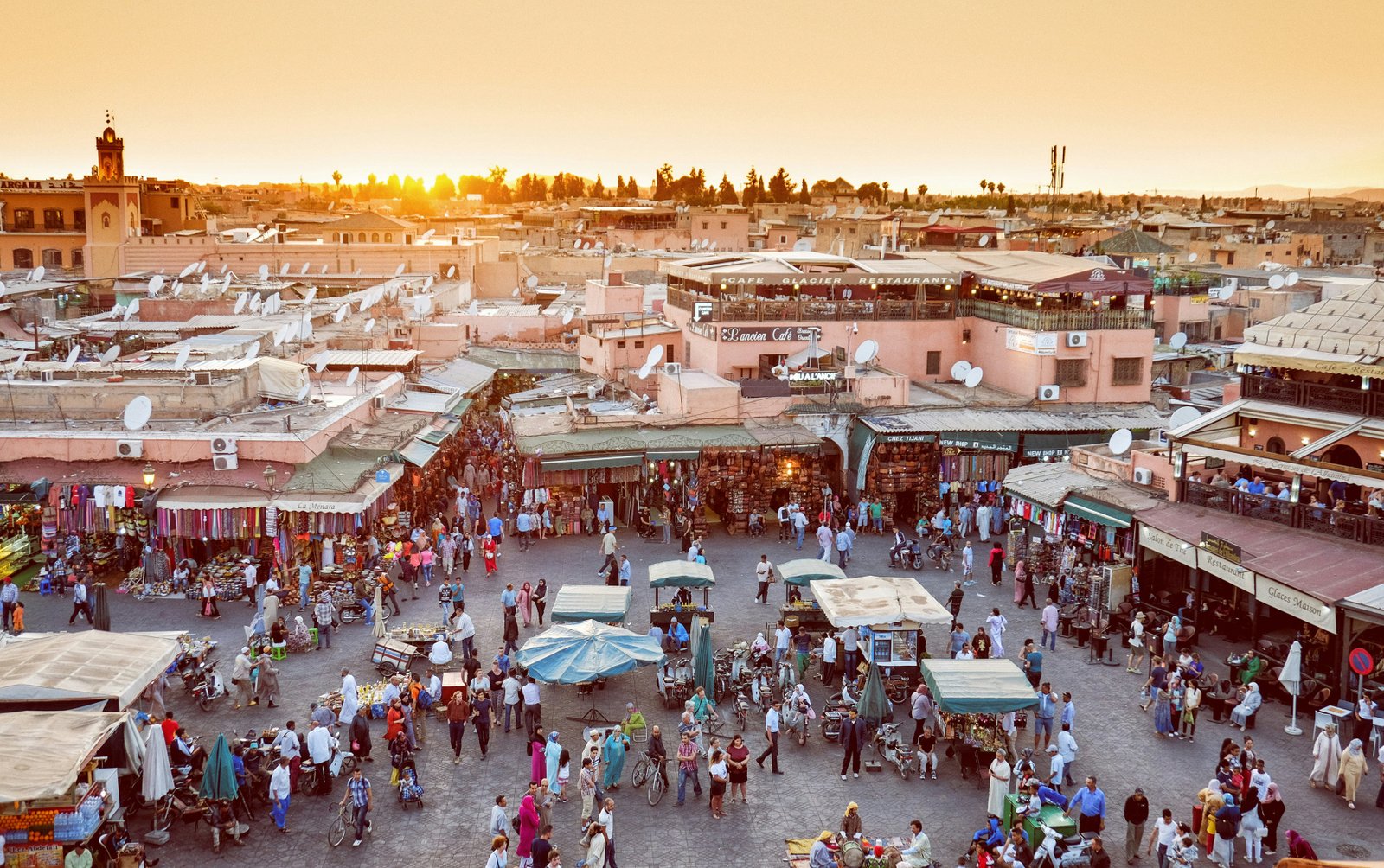
Marrakech’s strategic position makes it the ultimate base for exploring Morocco’s diverse landscapes and rich culture. Located at the foothills of the Atlas Mountains, this imperial city offers fascinating insight into centuries of Berber culture while providing modern amenities that make trip planning effortless. One unique sight in Morocco is the phenomenon of goats climbing argan trees, a quirky and memorable experience for visitors. A traditional Moroccan hammam provides an authentic steam bath experience, offering a relaxing and cultural way to unwind after a day of exploration.
The city’s location advantages are remarkable. You can reach traditional Berber villages in the High Atlas Mountains within just 1.5 hours, making them perfect day trip destinations. The Atlantic coast lies 2.5 hours away, where charming coastal towns and experiences await in places like Essaouira. Even the legendary Merzouga Desert, with its towering dunes, becomes accessible through organized tours that depart regularly from the city. Aït Benhaddou, a UNESCO World Heritage Site located about 3 hours southeast of Marrakech, is another must-visit destination, showcasing traditional Berber architecture and dramatic desert backdrops. These sites, including Aït Benhaddou, Essaouira, and the Merzouga desert, are among the most frequently visited by travelers exploring Morocco from Marrakech.
Marrakech’s medina, a UNESCO World Heritage site, pulses with life around the iconic Jemaa el-Fnaa square. Here, storytellers weave ancient tales while the aroma of mint tea mingles with spices from countless souks. Jemaa el-Fna Square is especially lively in the evening, with snake charmers, food stalls, and vibrant performances creating an unforgettable atmosphere. The Djemaa el-Fna is a central square in Marrakech and serves as a hub of cultural and social activity. Exploring the historic Medina, Jemaa el-Fna square, and the vibrant souks is essential for a trip to Marrakech. The souks in the Medina offer a variety of products from spices to leather goods, providing a colorful and fragrant shopping experience. The Koutoubia Mosque, a key architectural highlight in Marrakech, stands nearby, adding to the cultural richness of the area. Many tours in Marrakech provide insight into the city, including visits to architectural highlights like the Koutoubia Mosque and the Bahia Palace. The Yves Saint Laurent Museum and Majorelle Garden are recommended unique sights in Marrakech, offering a blend of art, history, and natural beauty. This cultural richness provides the perfect introduction to Morocco before venturing into the country’s remote rural areas.
The city’s international airport connects directly to major European cities, making Morocco travel FAQs about accessibility largely unnecessary. Whether you’re planning winter escapes or summer months adventures, Marrakech maintains year-round appeal with hotel staff trained to accommodate travelers from around the world. Morocco’s weather includes scorching temperatures in the summer and surprisingly cold nights in the winter. Transportation in Marrakech’s medina is best accomplished on foot due to narrow streets, while taxis serve longer distances, ensuring convenience for all types of travelers. ATMs are widespread in Morocco, making it easy to get cash, even for those who prefer not to carry large amounts of currency. The water is chlorinated in large cities, but it is better to drink bottled water to avoid any potential health issues.
Understanding the different trip styles helps you choose the perfect morocco adventure. From quick day trips to extended journeys across southern morocco, each option offers unique benefits tailored to different travel preferences and time constraints. These Marrakech, Morocco trips are designed to accommodate a wide range of travellers, ensuring memorable experiences for everyone.
Day trips from Marrakech offer incredible flexibility for travelers who prefer returning to their comfortable accommodations each night. These excursions range from half-day sunset experiences to full-day cultural immersions, all designed to showcase Morocco’s diversity without requiring overnight travel.
Half-day excursions typically last 4-6 hours and include popular options like Agafay Desert sunset tours and sunrise hot air balloon rides. The Agafay Desert, located just one hour from the city, provides a taste of desert activities without the lengthy journey to the Sahara Desert. Here, you can enjoy camel rides, traditional Berber music around a campfire, and stunning sunset views over the rocky desert landscape. Camel rides are a particularly popular activity in the Agafay Desert, offering a quintessential Moroccan experience.

Full-day adventures spanning 8-12 hours open doors to remarkable destinations like the Ourika Valley in the High Atlas Mountains, the Atlantic coast town of Essaouira, or the spectacular Ouzoud Waterfalls. These best day trips allow deep exploration while maintaining the comfort of returning to your chosen accommodation in Marrakech each night. The Ouzoud Waterfalls, located about 2.5 hours northeast of Marrakech, are Morocco's highest waterfalls, dropping an impressive 110 meters and surrounded by stunning red cliffs and olive groves, making them a must-visit destination. Visitors can also spot Barbary macaques near the waterfalls, adding a unique wildlife experience to the trip.
The benefits of day trips extend beyond convenience. They’re perfect for shorter stays, allowing travelers to experience Morocco’s highlights without committing to multi-day tours. Families with children particularly appreciate this flexibility, as it reduces luggage requirements and maintains familiar sleeping arrangements. However, it’s important to note that the distance and travel times for day trips from Marrakech can vary significantly, often involving several hours of transport.
Multi-day tours unlock Morocco’s most remote and spectacular destinations, offering deeper cultural immersion than single-day excursions. These comprehensive journeys range from 3-day Sahara desert expeditions to extensive 15-day adventures covering the country’s imperial cities, mountains, and coast.
Three-day Sahara expeditions represent the most popular multi-day option. These tours typically include travel through the Todra Gorge, overnight stays in authentic desert camp accommodations, and sunrise camel rides across the Merzouga Desert’s golden dunes. A highlight of the experience is enjoying a memorable dinner under the stars at a desert camp, often accompanied by traditional music or storytelling, making the night truly unforgettable. The journey covers significant distances but rewards travelers with unforgettable experiences under star-filled desert skies.
Five to seven-day northern morocco circuits expand your horizons to include Fez, with its medieval medina and traditional craftsmanship centers, and the blue-painted mountain town of Chefchaouen. These tours showcase the country’s diverse architectural styles and regional cultures, from ancient kasbahs to modern coastal developments.
Comprehensive 10-15 day tours represent the ultimate morocco experience, combining imperial cities, high Atlas mountain adventures, Sahara desert camping, and Atlantic coast relaxation. These extensive journeys often include private transfers, local Berber guide services, and accommodations ranging from traditional riads to luxury desert camps.
The advantages of multi-day tours include visiting remote destinations inaccessible through day trips, experiencing authentic Berber culture in small rural communities, and developing deeper connections with local guides. However, they require more planning, larger budgets, and comfort with changing accommodations and long travel days.
Marrakech’s strategic location opens access to Morocco’s most spectacular destinations, each offering unique experiences that define unforgettable morocco trips. From snow-capped mountains to endless desert horizons, these destinations showcase the incredible diversity that makes morocco such a compelling travel destination.

The High Atlas Mountains rise dramatically from Marrakech’s outskirts, offering some of the best tours available for nature lovers and cultural enthusiasts. Day trip options to the Ourika Valley provide access to traditional Berber villages where time seems suspended in ancient rhythms of mountain life. The High Atlas Mountains also offer hiking experiences through picturesque valleys and traditional Berber villages, providing a deeper connection to Morocco's natural and cultural heritage.
Imlil village serves as the gateway to Mount Toubkal, North Africa’s highest peak at 4,167 meters. Even non-climbers can enjoy spectacular hiking to the Toubkal base camp, where traditional tajine lunches in mountain villages create lasting memories. Local Berber guide services enhance these excursions, providing fascinating insight into centuries-old farming techniques and mountain survival traditions. For a unique perspective, consider a sunrise hot air balloon ride over Marrakech, which often includes a traditional Moroccan breakfast in a Berber tent after the flight. Camel rides are a popular activity in the Agafay Desert, about an hour from Marrakech. Additionally, the Ben Youssef Madrasa, one of the largest former Islamic colleges in North Africa, is renowned for its stunning architecture and offers a glimpse into Morocco's rich educational history. Jardin Majorelle is a peaceful oasis featuring vibrant cobalt blue buildings and a diverse plant collection, making it a must-visit for those seeking tranquility and beauty.
Winter transforms the High Atlas into Morocco’s skiing destination, with Oukaimeden resort offering slopes from January through March. This unique experience combines African adventure with European-style winter sports, creating stories few travelers can share.
The Atlas Mountains provide perfect day trip escapes from Marrakech’s summer months heat, with temperatures remaining comfortable even when the city swelters. Many tours include visits to cooperative centers where local women create traditional crafts, supporting sustainable tourism that benefits entire mountain communities.
The Sahara Desert represents the pinnacle of morocco adventures, and multiple tour options make this legendary landscape accessible from Marrakech. The Merzouga Desert, famous for its towering dunes and authentic nomadic culture, requires a 9-hour travel but rewards visitors with truly transformative experiences.
Three-day Merzouga expeditions typically include stops at aït benhaddou, a UNESCO World Heritage Site famous as a Hollywood filming location for movies like “Gladiator” and “Lawrence of Arabia.” This ancient kasbah showcases traditional Berber architecture and provides perfect photo opportunities against dramatic desert backdrops.
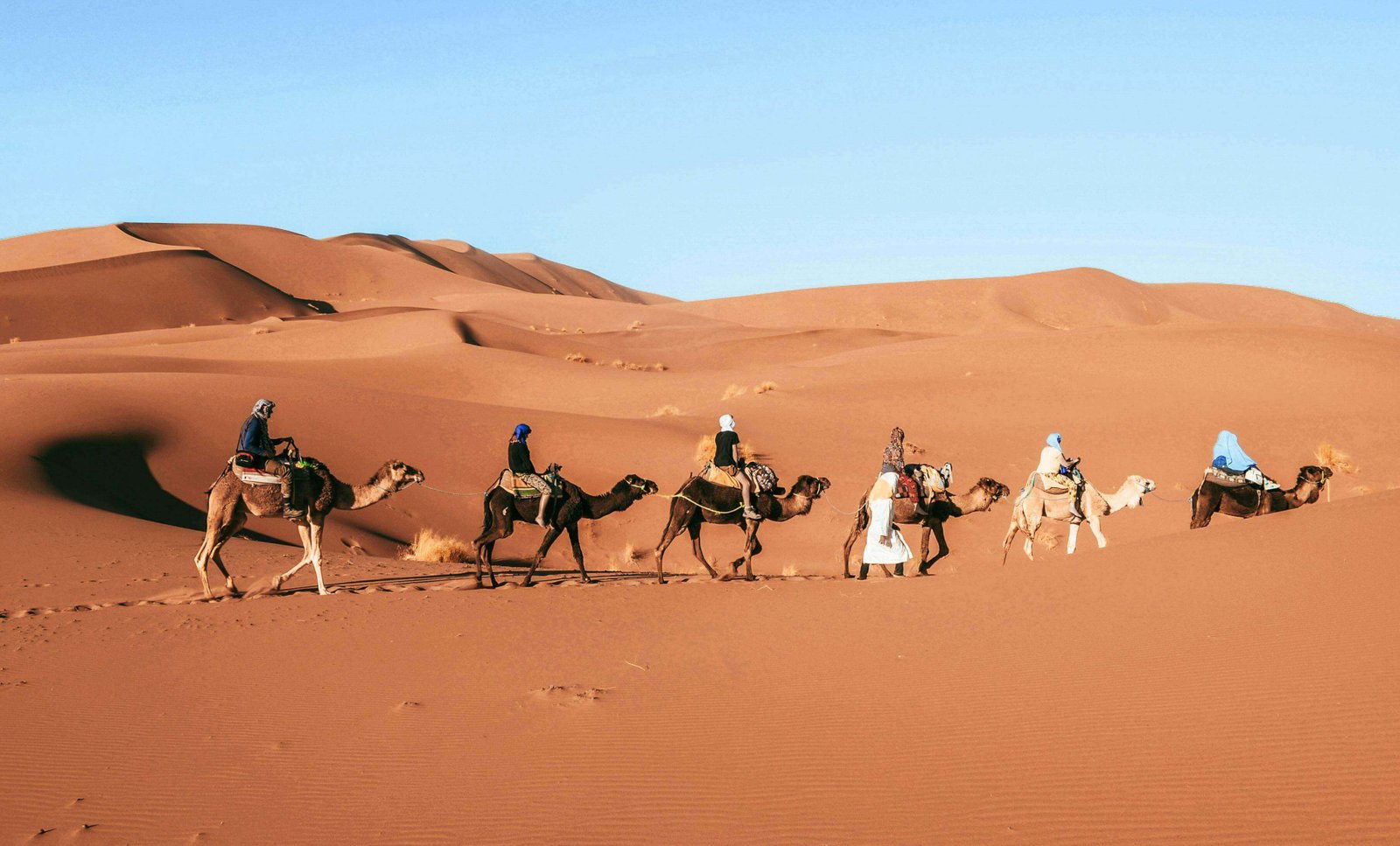
For travelers with limited time, the Agafay Desert offers excellent alternatives just one hour from Marrakech. This rocky desert landscape provides authentic camel rides, sandboarding opportunities, and luxury glamping experiences without requiring multi-day commitments. Desert activities here include quad biking, traditional Berber music performances, and stargazing sessions with telescopes.
Zagora Desert presents another option, reachable in a 2-day trip that balances desert experiences with reasonable travel times. Many tours combine Zagora with visits to ancient kasbahs and palm oases, creating diverse itineraries that showcase southern Morocco’s varied landscapes.
Desert camp accommodations range from basic nomadic-style tents to luxury installations with private bathrooms, gourmet dining, and spa services. Regardless of comfort level, all desert camps share the magic of sleeping under brilliant star displays impossible to see near large cities.
Morocco’s Atlantic coast offers refreshing contrasts to desert and mountain adventures, with Essaouira standing out as the most popular coastal destination from Marrakech. This charming coastal town, just 2.5 hours away, combines Portuguese fortress architecture with fresh seafood cuisine and world-class windsurfing conditions. Essaouira also offers a coastal experience with its fishing port and UNESCO-listed medina, making it a fascinating blend of history and culture. The medina of Essaouira features narrow streets full of shops selling local crafts, adding to its vibrant and unique charm. As a historical port town, Essaouira provides a rich backdrop for exploring Morocco's maritime heritage.
Essaouira’s medina, another UNESCO World Heritage Site, provides a more relaxed alternative to Marrakech’s intense souks. Here, you can watch traditional craftsmen create beautiful woodwork while enjoying mint tea in seaside cafes. The town’s ramparts offer stunning Atlantic Ocean views, especially during sunset when the light transforms the ancient stones into golden sculptures.
Casablanca day trips introduce travelers to modern morocco culture, centered around the magnificent Hassan II Mosque. This architectural marvel showcases contemporary Islamic design, while the city’s Art Deco neighborhoods reflect the country’s colonial history. Many tours combine Casablanca with Rabat, creating comprehensive introductions to contemporary Moroccan life. For more inspiration, discover the best things to do in Casablanca during your visit.
Agadir represents the beach resort option, located 3 hours from Marrakech along excellent highways. This modern coastal city offers Atlantic Ocean relaxation, golf courses, and fresh seafood restaurants that provide perfect endings to adventure-filled morocco trips.

Morocco’s rich history comes alive through visits to ancient kasbahs, imperial cities, and archaeological sites easily accessible from Marrakech. Aït Benhaddou stands as the crown jewel, this UNESCO World Heritage site and Hollywood filming location showcases traditional Berber architecture against dramatic Atlas Mountains backdrops. Located about 3 hours southeast of Marrakech, Aït Benhaddou is a must-visit for its historical significance and stunning scenery. The Saadian Tombs, dating back to the 16th century, feature impressive ornate mausoleums and provide a fascinating glimpse into Morocco's historical and architectural heritage.
Telouet Kasbah offers fascinating insight into Morocco’s complex political history as the former residence of the powerful Glaoui family. Its intricate decorations and strategic mountain location demonstrate the wealth and influence of tribal leaders who controlled trans-Saharan trade routes. Aït Benhaddou, another UNESCO World Heritage Site, is renowned for its traditional mud-brick architecture and its role as a filming location for various movies, making it one of the most captivating places to visit from Marrakech.
Fez, one of Morocco’s four imperial cities, requires overnight stays but rewards visitors with the world’s largest functioning medieval medina. Traditional craftsmanship centers here maintain techniques unchanged for centuries, while the ancient university represents one of the world’s oldest continuously operating educational institutions.
Meknes and Volubilis combination tours showcase both Islamic imperial architecture and Roman archaeological remains. These sites demonstrate Morocco’s position as a crossroads of civilizations, where African, European, and Middle Eastern influences merged to create unique cultural expressions.
Many cultural tours include cooking classes where local families share traditional recipe secrets passed down through generations. These intimate experiences provide fascinating insight into daily morocco life while creating delicious memories of tagines, couscous, and aromatic mint tea. A cooking class in Marrakech often includes a market visit to purchase fresh ingredients, adding an interactive and authentic touch to the culinary adventure.
A journey through Morocco is incomplete without delving into the heart of Berber culture, which thrives in the High Atlas Mountains and scattered villages throughout the region. The Berber people, or Amazigh, are the original inhabitants of North Africa, and their traditions, language, and way of life offer a fascinating insight into Morocco’s rich history. Many tours from Marrakech include visits to authentic Berber villages such as Imlil, Ait Benhaddou, and the picturesque Ourika Valley, where travelers can witness daily life unfolding against the dramatic backdrop of the Atlas Mountains.
Exploring these villages, you’ll discover unique stone and adobe architecture, bustling local markets, and terraced fields that have sustained communities for generations. A local guide can introduce you to the customs and stories that define Berber culture, from traditional music and crafts to the communal sharing of meals. Sampling homemade bread, sipping mint tea, and enjoying a hearty tagine in a mountain home provides a genuine connection to the rhythms of rural life.
Many tours offer immersive experiences, allowing you to participate in village activities, learn about ancient farming techniques, and understand the significance of the High Atlas in shaping Morocco’s identity. Whether you’re hiking between villages or simply enjoying the hospitality of local families, a visit to the Berber villages promises a deeper appreciation for the country’s enduring culture and the resilience of its mountain communities.
Successful Marrakech Morocco trips require thoughtful planning that considers seasonal variations, trip duration, and booking strategies. Understanding these factors ensures you maximize your time while avoiding common pitfalls that can diminish your morocco experience. A common question is, "Is Morocco safe?" Morocco is generally considered safe for travelers, especially when you respect local laws and customs and choose reputable tour operators who prioritize safety.
Morocco’s climate varies dramatically by season and region, making timing crucial for optimal experiences. The best time to visit Marrakech and explore wider morocco falls during March through May and September through November, when temperatures range comfortably between 20-28°C.
Winter months (December-February) offer pleasant daytime temperatures in Marrakech but require careful consideration for mountain and desert excursions. The High Atlas Mountains often receive snow, making some hiking trails impassable while creating unique skiing opportunities at Oukaimeden. Desert nights become surprisingly cold, with temperatures dropping near freezing, requiring proper warm clothing for desert camp experiences.
Summer months (June-August) present significant challenges, with Marrakech temperatures frequently exceeding 45°C. While the Atlas Mountains provide cool refuges, desert activities become extremely demanding during peak heat. Many experienced travelers avoid morocco during the summer months unless they’re specifically seeking hot weather experiences or focusing entirely on coastal destinations.
Ramadan, the Islamic holy month of fasting, impacts trip planning significantly in this muslim country. Restaurant hours change, some attractions close during daylight hours, and the general pace of life shifts. However, this period also offers unique cultural insights and special evening celebrations that many travelers find rewarding.
Trip duration determines the depth and breadth of experiences possible during your visit to Morocco Adventure. Minimum stays of 4-5 days allow exploration of Marrakech city combined with one significant day trip, perhaps to the Ourika Valley or Agafay Desert.
Ideal 7-10 day itineraries balance multiple day trips with 2-3 day Sahara desert expeditions, creating comprehensive introductions to Morocco’s diverse landscapes and cultures. This timeframe allows visits to the Atlas Mountains, desert camping experiences, and coastal escapes without feeling rushed.
Extended stays of two weeks or longer enable comprehensive morocco tours, including northern cities like Fez and Chefchaouen, extensive Atlas Mountains trekking, and relaxed coastal time. These longer trips allow spontaneous discoveries and deeper cultural connections with local communities.
Sample itineraries should balance active adventures with cultural immersion and relaxation. A typical week might include Marrakech exploration (2 days), Atlas Mountains day trip (1 day), three-day Sahara expedition (3 days), and coastal recovery time in Essaouira (1 day).
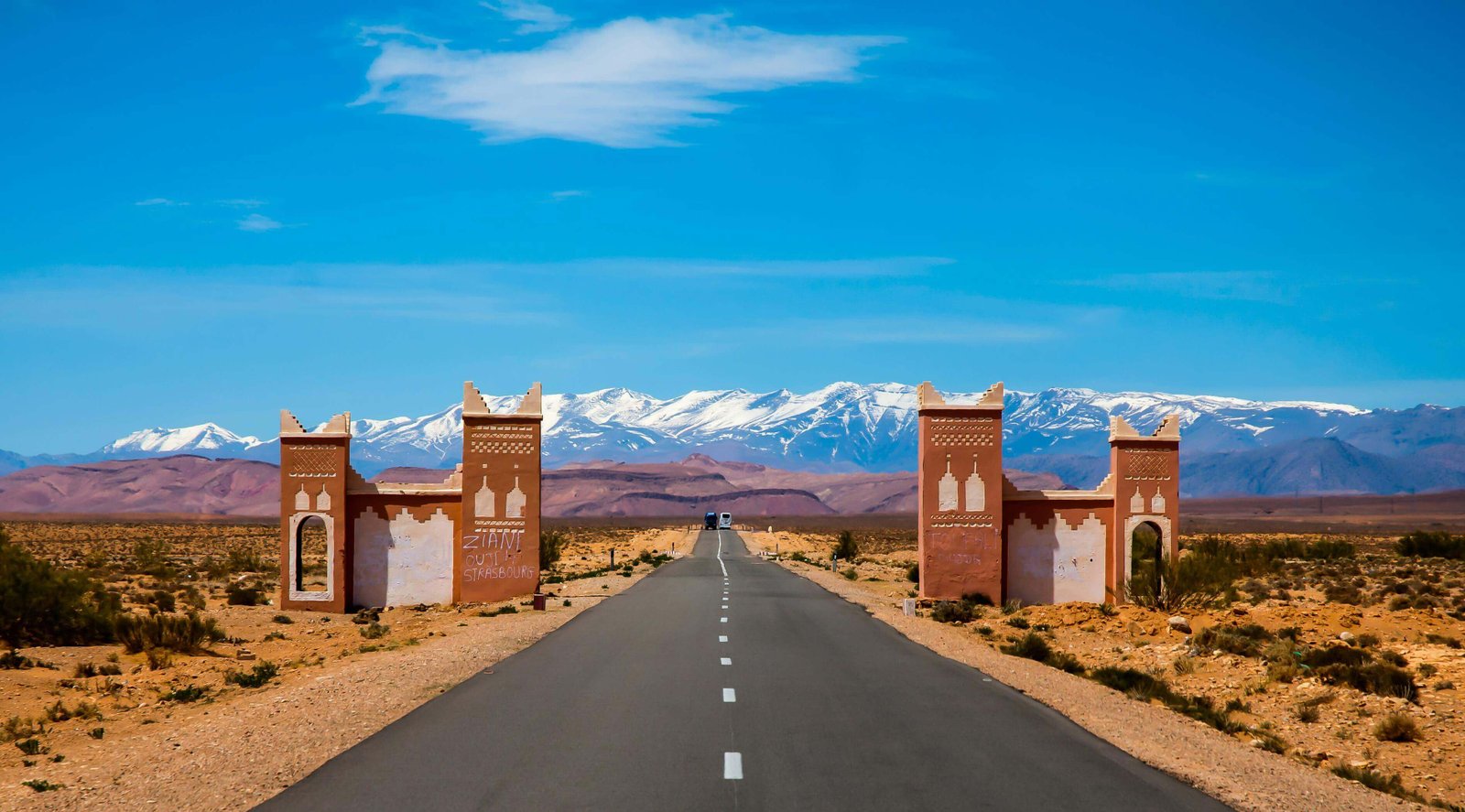
Booking becomes essential for popular tours, particularly Sahara Desert expeditions, during peak seasons (December-January and March-April). Many tours book solid 2-4 weeks ahead, especially those offering luxury desert camp accommodations or private transfers.
Private versus group tour considerations involve balancing cost, flexibility, and social aspects. Private tours offer complete itinerary control and personalized attention from guides, while group tours provide social connections and reduced costs. Larger group tours (8-15 people) offer the most economical options but sacrifice flexibility.
Transportation options range from rental cars for independent travelers to organized tour buses for hassle-free experiences. Rental cars provide maximum flexibility but require comfort with Moroccan driving conditions, Arabic signage, and navigation through rural areas. Private drivers offer middle-ground solutions, combining flexibility with local expertise.
Peak season booking requires particular attention to accommodation availability. Popular riads and desert camps fill months ahead, while tour options become limited. Booking early also secures better prices, as last-minute options often carry premium pricing.
Understanding practical requirements ensures smooth Marrakech, Morocco trips without unwelcome surprises. From visa requirements to packing essentials, proper preparation enhances your Morocco experience while minimizing potential complications. Local laws and customs should also be understood for a safe travel experience in Morocco, as respecting cultural norms and regulations ensures a more enjoyable and respectful visit. It is important to avoid public displays of affection in Morocco, especially for LGBTQ+ travelers, as such public displays may be frowned upon or even subject to legal restrictions.
Most Europeans and Americans receive 90-day tourist stamps upon arrival, making advance visa applications unnecessary for typical trips. However, passports must remain valid for at least six months from entry dates, a requirement strictly enforced at Moroccan borders.
Recommended vaccinations include Hepatitis A and B, typhoid, and routine immunizations like measles, mumps, and rubella. While yellow fever vaccinations aren’t required unless arriving from endemic countries, travel insurance covering medical evacuation becomes crucial for desert activities and Atlas Mountains adventures.
Travel insurance should specifically cover adventure activities common in morocco trips, including camel rides, desert camping, mountain hiking, and potential vehicle evacuations from remote areas. Companies like World Nomads specialize in adventure travel coverage that addresses these specific risks.
Health concerns remain minimal for most travelers, with clean bottled water widely available and most accommodations maintaining high hygiene standards. However, stomach adjustments to local cuisine are common, making basic medications advisable for the initial days.

The Moroccan dirham (MAD) serves as the local currency, with approximate exchange rates of 10 MAD per 1 EUR, though rates fluctuate regularly. ATMs provide widespread access in large cities and towns, but availability becomes limited in remote mountain areas and desert regions.
Typical trip costs vary dramatically based on comfort levels and tour options. Day trips range from €30-80, while three-day Sahara tours cost €200-400 for standard accommodations. Luxury options can exceed €500+ per person, particularly for private transfers and premium desert camp experiences.
Tipping culture plays an important role in Morocco’s service economy. Local guides typically receive 10-20 MAD for half-day services, while private drivers expect 50-100 MAD daily. Restaurant servers appreciate 10% tips, and hotel staff respond well to small daily gratuities.
Budget planning should account for shopping in souks, where negotiation is expected and cash purchases dominate. Carrying small denomination bills facilitates easier transactions and reduces confusion during bargaining sessions in traditional markets.
Seasonal clothing requirements vary dramatically due to temperature variations between day and night, particularly in desert and mountain regions. Layering systems work best, allowing adjustments as conditions change throughout each day.
Desert essentials include high-SPF sunscreen (50+), wide-brimmed hats, and lightweight scarves for protection against sandstorms. Warm sleeping clothes become crucial for desert camps, where temperatures can drop 20-30°C from daytime highs to nighttime lows.
Mountain gear requirements include sturdy hiking boots for rocky terrain, rain jackets for higher altitudes where weather changes quickly, and warm layers for elevation-related temperature drops. The Atlas Mountains can experience snow even during mild seasons.
Cultural considerations require modest clothing for religious sites and rural communities. Covering shoulders and knees shows respect in this muslim country while also providing practical protection against the sun and sand. Lightweight, long-sleeved shirts prove more comfortable than shorts during intense sun exposure.
Staying connected during your Morocco adventure is easier than ever, especially in larger cities like Marrakech, where most hotels, cafes, and restaurants offer reliable internet access. Whether you need to check maps, share your journey on social media, or keep in touch with loved ones, you’ll find Wi-Fi widely available in urban areas. Many tour operators also provide internet access on their buses or in their offices, ensuring you can stay online even while planning your next excursion.
For those venturing into rural areas or embarking on multi-day tours through the Atlas Mountains or the desert, connectivity can be more limited. To ensure uninterrupted access, consider purchasing a local SIM card upon arrival or renting a portable Wi-Fi hotspot. These options are affordable and provide coverage throughout much of Morocco, making it easy to navigate, communicate, and share your experiences wherever your trip takes you.
Even in remote Berber villages or during desert adventures, you’ll often find that your guides and accommodations are equipped to help you stay connected when needed. With a little preparation, you can enjoy the best of both worlds—immersing yourself in Morocco’s timeless landscapes while remaining in touch with the modern world.
Morocco is widely regarded as one of the safest destinations in North Africa, attracting millions of visitors each year with its welcoming atmosphere and vibrant culture. While crime rates are low compared to many other countries in Africa, it’s still important to take sensible precautions to ensure a smooth and enjoyable trip. In bustling souks and markets, keep your belongings secure and be mindful of your surroundings, especially in crowded areas.
When exploring rural areas or traveling at night, it’s best to use reputable taxi services or arrange private transfers through your hotel or tour operator. A local guide can provide invaluable advice on safe routes and cultural etiquette, helping you navigate both large cities and remote destinations with confidence. Always follow the guidance of your tour leader, especially when venturing off the beaten path.
As Morocco is a muslim country, respecting local customs—such as dressing modestly and observing public decorum—will enhance your experience and help you avoid misunderstandings. During Ramadan, be aware of changes in business hours and public behavior. By staying informed, using common sense, and embracing the country’s traditions, you’ll find Morocco to be a safe, welcoming, and unforgettable destination.
Travel insurance is a must-have for any trip to Morocco, especially if your itinerary includes adventure activities like camel rides in the desert, hiking in the Atlas Mountains, or exploring remote regions. Choose a policy that covers medical emergencies, trip cancellations, and specific activities you plan to enjoy, such as desert camping or mountain trekking. This extra layer of protection ensures peace of mind while you’re exploring Morocco’s diverse landscapes.
To stay healthy during your travels, always drink bottled water, especially when venturing outside major cities, and avoid undercooked food. The Moroccan sun can be intense, particularly in the desert and mountains, so pack sunscreen, a hat, and sunglasses to protect yourself while exploring. If you’re planning to join tours that include camel rides or hiking, make sure your insurance covers these activities and that you’re physically prepared for the adventure.
Taking these simple precautions allows you to focus on the incredible experiences Morocco has to offer, from the bustling streets of Marrakech to the serene beauty of the High Atlas and the vast expanse of the Sahara Desert.
Selecting the perfect morocco adventure depends on matching your interests, travel style, and physical capabilities with available tour options. Understanding these connections ensures your Marrakech, Morocco trips create lasting memories rather than disappointing mismatches.
Adventure seekers thrive on Atlas Mountains trekking, multi-day Sahara desert camping, and active desert activities like quad biking in the Agafay Desert. These travelers appreciate challenging hikes to Mount Toubkal base camps, sunrise camel rides across dunes, and sleeping under star-filled desert skies in traditional camps.
Culture enthusiasts prefer imperial cities tours, traditional cooking classes with local families, and artisan workshops in ancient medinas. These experiences provide fascinating insight into Berber culture, Islamic traditions, and craftsmanship techniques unchanged for centuries. Many tours include visits to traditional hammams and intensive souk explorations.

Families with children benefit from shorter day trips, accessible destinations like the Ourika Valley, and comfortable Agafay Desert glamping experiences. These options provide authentic morocco experiences without overwhelming young travelers with lengthy travel times or challenging physical demands.
Luxury travelers seek private riads with personalized service, helicopter tours over diverse landscapes, and premium desert camps featuring spa services and gourmet dining. These experiences combine Morocco’s cultural richness with international comfort standards, creating seamless adventures for discerning travelers.
Budget-conscious travelers can enjoy authentic experiences through group day tours, local guesthouses in Berber villages, and public transport combinations for independent exploration. Many tours offer a huge variety in pricing levels while maintaining quality cultural interactions and stunning natural beauty access.
Weather considerations significantly impact trip selection. Summer months favor Atlas Mountains escapes and coastal destinations, while winter enables comfortable desert camping and skiing opportunities. Shoulder seasons (spring and autumn) provide optimal conditions for comprehensive morocco tours combining multiple regions.
Physical fitness requirements vary dramatically between tour options. Desert camping involves walking on soft sand and sleeping in basic accommodations, while Atlas Mountains day trips require moderate hiking abilities and comfort with altitude changes. Honest self-assessment ensures appropriate tour selection.
The magic of Marrakech morocco trips lies in their incredible diversity, offering something special for every type of traveler. Whether you’re drawn to the mystical Sahara Desert, fascinated by ancient Berber culture, or seeking unique combinations of adventure and luxury, morocco provides unforgettable experiences that transform ordinary trips into extraordinary journeys.
From sunrise hot air balloon rides over palm groves to intimate mint tea ceremonies with nomadic families, every moment in morocco offers opportunities for discovery and wonder. The country’s strategic position connecting Africa, Europe, and the Middle East has created a unique cultural fusion that captivates travelers and creates stories worth sharing for a lifetime.
Start planning your morocco adventure today by considering which experiences most excite your imagination. Whether that’s sleeping under desert stars, hiking through towering mountains, or exploring ancient UNESCO World Heritage sites, Marrakech stands ready to serve as your gateway to Morocco’s most incredible destinations and cultures.
In conclusion, Morocco is a destination that truly has it all—towering mountains, ancient cities, vibrant souks, and a culture that offers a fascinating insight into both Africa’s and the world’s history. Whether you’re wandering the lively streets of Marrakech, savoring fresh seafood on the Atlantic coast, or trekking through the High Atlas, every moment is filled with amazing sights and unforgettable experiences.
To make the most of your trip, consider joining one of the many tours available, which can provide expert guidance and open doors to authentic local encounters. Don’t miss the chance to sample Morocco’s huge variety of cuisine, from aromatic tagines to sweet pastries, and always take time to enjoy a glass of mint tea—a symbol of Moroccan hospitality. With its rich culture, friendly locals, and endless opportunities for adventure, Morocco is a country that will capture your heart and imagination.
Start planning your visit today, and get ready to explore a world where history, culture, and natural beauty come together in the most spectacular ways. Whether you’re drawn to the mountains, the desert, or the bustling city life, Morocco promises a journey you’ll never forget.
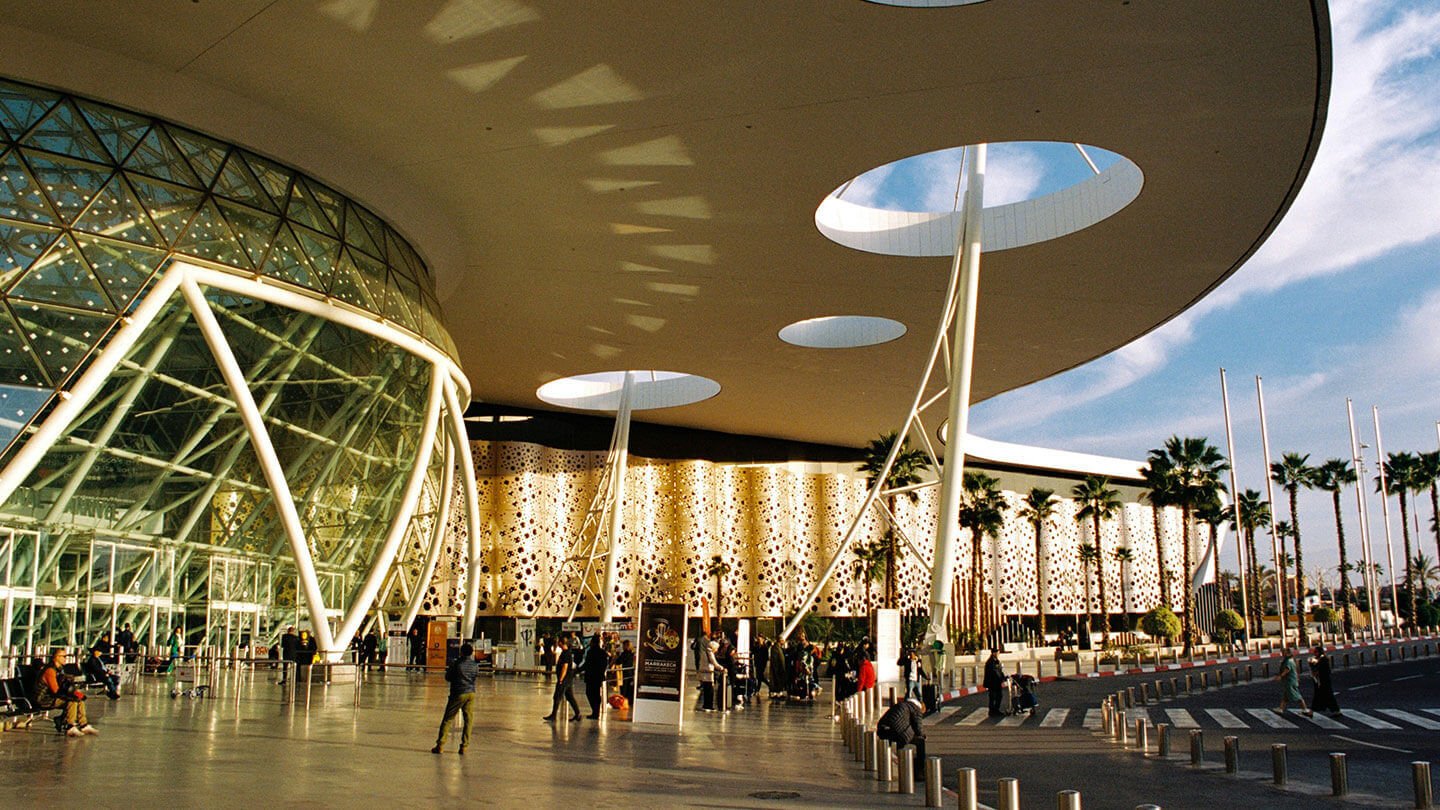
Discover essential information on Morocco's top airports, including facilities, tips, and travel adv...
Read this article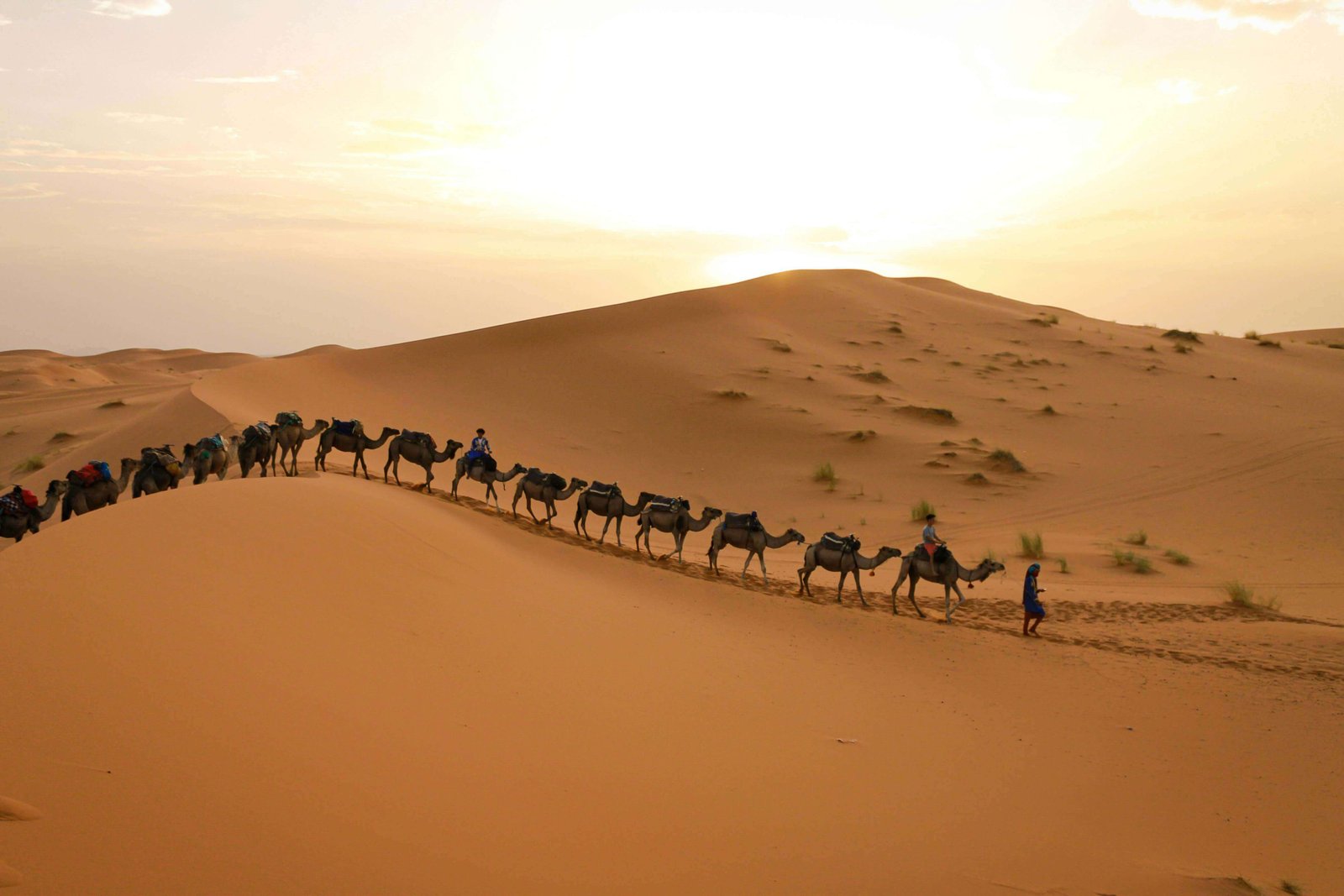
Discover the top Morocco tour agency for personalized travel experiences. Find the perfect fit for y...
Read this article
Soar above Marrakech's breathtaking landscapes in a hot air balloon. Discover tips, insights, and wh...
Read this articleWant cool tour deals and tips about Morocco? Enter your email and we’ll send them to you each month!